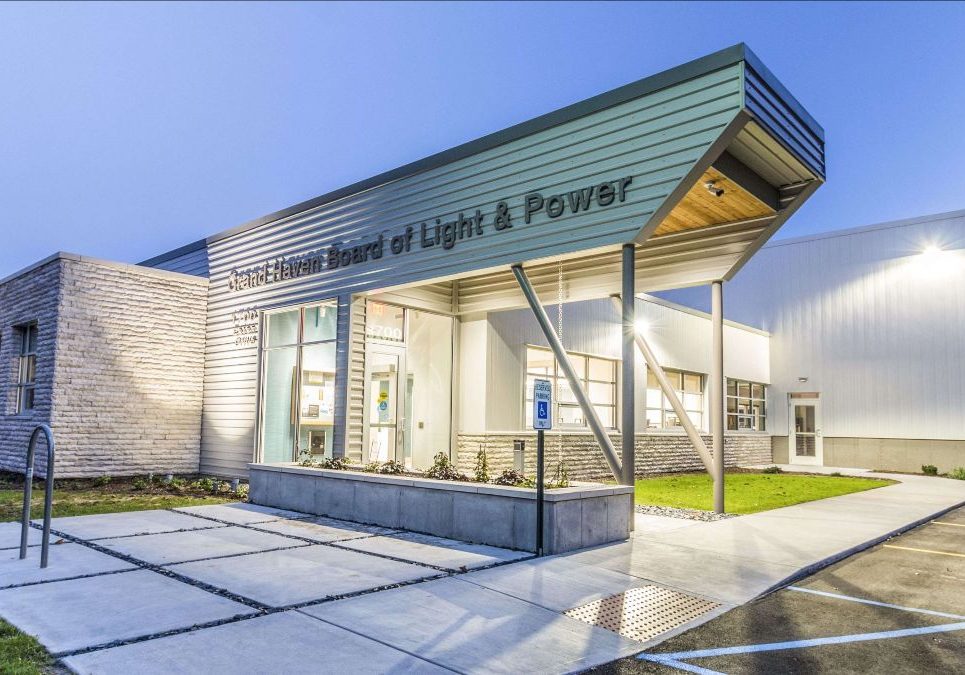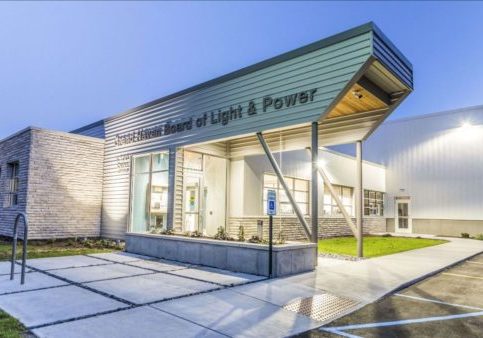Flood Plains and Harbor Island
With the June 1, 2020, retirement and closure of the J.B. Sims plant, Grand Haven now can embrace the opportunity to move forward with more sustainable, reliable and cost-effective energy solutions. In developing the solution of a combined heat and power plant proposed for the former Sims site, Grand Haven Board of Light and Power considered the many challenges presented by a complex history of uses on Harbor Island, always keeping our community and GHBLP owner-customers in the forefront.
Concerns with Developing the Land
Much of GHBLP’s Harbor Island property, including the entire proposed area for redevelopment of an Operations and Technology Center, is safely above the 100 year floodplain (a 1% chance of annual flood) and 500 year floodplain (a 0.2% chance of annual flood), as determined by FEMA. Sims Power Plant had not experienced flooding in its almost 60-year existence. Below, please find a flood map of Harbor Island taken from FEMA’s website for reference (https://bit.ly/3sr4FgU).
Additionally, the Sims Power Plant site was not identified as a flood risk in the 2017 report, “Building Coastal Resiliency In the City of Grand Haven, Michigan,” from Michigan University and the Land Information Access Association (LIAA), nor was it identified as a flood risk in LIAA’s 2018 guidebook, “Living in Sensitive Areas, a Homeowners Guide for Residents of Grand Haven.”
There has also been a question of alternative development opportunities for the site including the area adjacent to Linear Park. Part of this site includes the former coal storage yard, where remediation efforts may include removing materials. These efforts would likely place this portion within the floodplain. Raising this area back above the floodplain, with the goal of future alternative development, would come at significant cost and may be restricted.
Harbor Island contains sensitive wetland areas, some of which have coal ash deposits and the former dump materials underneath, which would make this area difficult to be developed for other future purposes. At the present time, GHBLP plans to retain the land above the floodplain for future utility development that may include solar farm sites and other developing technologies aligning with the city’s goals. Furthermore, GHBLP must minimally retain operation of the transmission lines around the Sim’s site for future maintenance, as the cost to relocate this integrated system would be prohibitive.
Existing Infrastructure
In Sims’ 60 years of service, the city developed increasingly complex electric transmission and distribution circuits to service residents on both sides of the Grand River, increasing system capacity to accommodate peak energy usage times over the last three years. This network of interconnected transmission lines and distribution circuits, which is still anchored to the Harbor Island site, would be very costly to replace or move elsewhere.
This complicated infrastructure, paired with the added difficulty of Harbor Island’s past as a city dump and depository for coal ash are large considerations in GHBLP’s current planning efforts. This past historical use makes wider community development beyond the proposed plan for this area much more difficult.
Finding sustainable alternatives while working to provide the community and customers with affordable, reliable energy has been a long process. We look forward to continuing to work with our community to find the best solutions together.

